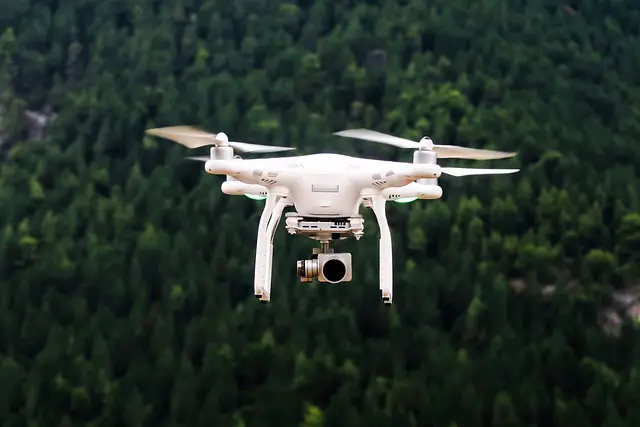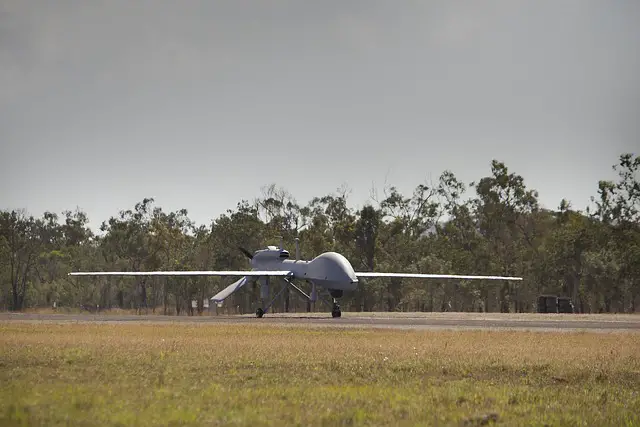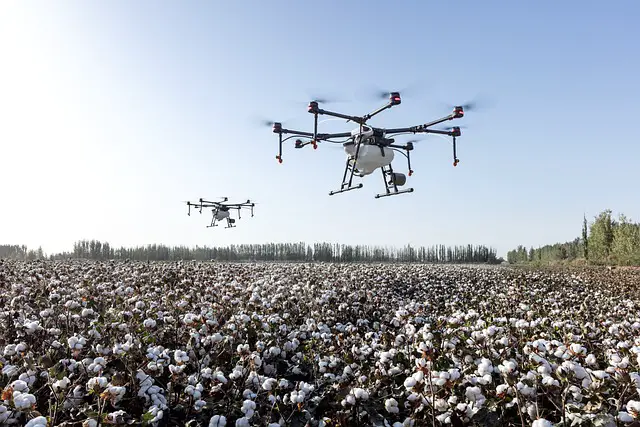Drones are remote-controlled devices typically used for recreational or commercial purposes, while unmanned aircraft can include any type of aircraft that is flown without a pilot on board. Drones have become increasingly popular in recent years due to their versatility and accessibility. They can be used for a wide range of applications such as aerial photography, crop monitoring, search and rescue operations, and even package delivery.
What is a drone?
(Image by Pexels from Pixabay )

A drone, also known as a quadcopter or an unmanned aerial vehicle (UAV), is essentially a remote-controlled aircraft. It can be controlled from the ground using a controller or through pre-programmed instructions.
Drones come in various shapes and sizes, ranging from small toy drones to large industrial ones used for surveillance and military purposes. They are equipped with cameras, sensors, GPS systems, and other advanced technologies that allow them to fly autonomously.
One of the key features of drones is their ability to hover in one place without any movement. This makes them ideal for capturing aerial footage and images that were previously impossible without hiring helicopters or airplanes.
In recent years, drones have become increasingly popular among hobbyists and professionals alike. They are used for photography, videography, surveying land areas, inspecting infrastructure like bridges and buildings, delivering packages in urban areas where traffic congestion hinders traditional delivery methods.
Drones offer endless possibilities when it comes to exploring our world from new perspectives while also providing practical solutions to everyday problems.
What is an unmanned aircraft?
(Image by Military_Material from Pixabay )

An unmanned aircraft is a type of aerial vehicle that doesn’t require a human pilot onboard. Instead, it can be controlled remotely or programmed to fly autonomously using sensors and navigation systems. These vehicles are often referred to as UAVs (Unmanned Aerial Vehicles), UAS (Unmanned Aircraft Systems), or RPAS (Remotely Piloted Aircraft Systems).
The term “unmanned” can be misleading since there are still humans involved in operating these aircraft, but they do so from the ground rather than being physically present in the cockpit. The use of unmanned aircraft has become increasingly popular for both military and civilian applications.
One advantage of unmanned aircraft is their ability to access areas that may be too dangerous or difficult for manned vehicles. They also have the potential to perform tasks at a lower cost and with greater efficiency than traditional methods.
However, there are concerns surrounding the safety and privacy implications of widespread drone usage. Regulations regarding their operation vary by country, but many countries require registration and restrictions on where they can be flown.
While unmanned aircraft offer many benefits, their usage must be carefully regulated to ensure public safety and protect individual privacy rights.
Drone Vs. Unmanned aircraft – Key differences
While the terms “drone” and “unmanned aircraft” are often used interchangeably, there are some key differences between the two.
Firstly, drones are generally smaller and less sophisticated than unmanned aircraft. Drones are typically used for recreational purposes or short-range surveillance, while unmanned aircraft are designed for longer missions like military operations or scientific research.
Secondly, drones can usually be controlled by an operator on the ground using a remote control or smartphone app. Unmanned aircraft, on the other hand, may be fully autonomous and programmed to complete a mission without human intervention.
There is also a difference in regulations governing drone and unmanned aircraft use. In most countries, drones weighing over a certain amount must be registered with aviation authorities and flown only within designated areas. Unmanned aircraft may require even stricter regulatory oversight due to their potential impact on safety or national security.
While both technologies share similarities in their ability to fly without human pilots onboard, they serve different purposes and have distinct design features that set them apart from one another.
How can drones be used?
Drones are versatile machines that can be used for a wide variety of purposes. One common use is in the field of photography and videography. Drones equipped with high-quality cameras can capture stunning aerial footage, providing a unique perspective that was once only possible from helicopters or airplanes.
Another use for drones is in agriculture. Farmers can use drones to survey crops, identify problem areas, and monitor growth over time. This information allows farmers to make more informed decisions about when to water, fertilize, or harvest their crops.
Search and rescue operations also benefit from the use of drones. In disaster situations where it may be too dangerous for humans to enter certain areas, drones can be used to scout locations and provide real-time data on conditions such as temperature, air quality levels or structural damage.
The construction industry has also found uses for drones by using them to inspect buildings and structures while under construction. By doing so they reduce safety risks associated with manual inspections which often require workers climbing ladders or scaffolding at great heights.
Delivery companies have been exploring the possibility of using drones as a faster means of delivering packages over short distances without having drivers face traffic jams on city streets during peak hours.
Are there any dangers associated with drones?
Drones have become increasingly popular in recent years, with more and more people purchasing them for recreational use. However, there are also some dangers associated with drones that should be considered.
One of the biggest risks is the potential for collisions with other aircraft. Drones can fly at a range of altitudes and speeds, which means they could pose a risk to manned aircraft if they stray into restricted airspace or collide with planes during takeoff or landing.
Another danger associated with drones is their ability to invade privacy. As unmanned aerial vehicles (UAVs), drones can fly over private property without permission and capture images or video footage that could compromise someone’s privacy.
In addition, drone operators may not always follow safety regulations when flying their devices. This could lead to accidents such as crashes or injuries from falling debris.
There is also the risk of cyber attacks on drones. As these devices rely on wireless communication systems to operate, hackers may attempt to gain control of them and cause damage.
While there are certainly benefits to using drones in various industries and hobbies, it’s important to be aware of the potential dangers associated with these devices as well.
The benefits of drones and unmanned aircraft
Drones and unmanned aircraft have a plethora of benefits that make them popular among various industries. One primary advantage is that they can be used for surveillance purposes without endangering human lives. They are also cost-effective as compared to traditional methods, making it easier for small businesses to use them.
In the agriculture industry, drones can help farmers monitor their crops by collecting data on soil health, plant growth rates and pest infestations. This allows farmers to take corrective measures early enough before any significant damage occurs.
Another benefit of drones is that they can be used in search and rescue missions in remote areas where access by humans may be limited or dangerous. Drones equipped with thermal imaging cameras can detect body heat from people stranded or lost in rough terrain.
The construction industry has also embraced drone technology as it enables project managers to monitor progress efficiently, identify bottlenecks and ensure compliance with safety regulations.
Drones provide an exciting new perspective for photographers and videographers who can create stunning aerial footage at affordable prices without the need for expensive equipment or permits.
The advantages of using drones outweigh its drawbacks when properly utilized.
The drawbacks and dangers of drones and unmanned aircraft
While there are numerous benefits to using drones and unmanned aircraft, it’s important not to overlook the potential risks associated with their use. One of the main drawbacks is that drones can be difficult to control, particularly in adverse weather conditions or when flying in areas with lots of obstacles.
There is also a significant risk of collisions between drones and other objects such as buildings or even people. This risk increases significantly when operators fly their drones out of sight, which is illegal in many countries.
Privacy is another concern associated with drone usage. Drones equipped with cameras can easily invade people’s privacy by capturing images without consent, leading to legal consequences for operators.
Moreover, terrorists could potentially use commercial off-the-shelf (COTS) drones fitted with explosives or chemical weapons for malicious purposes – an example was the attack on two oil facilities located near Riyadh in September 2019.
Some individuals may misuse their drone privileges by intentionally causing disruption or interfering with emergency service operations.
While there are certainly advantages to using drones and unmanned aircrafts, it’s crucial that we consider these potential dangers and work towards minimizing them through regulations and responsible drone usage practices.








